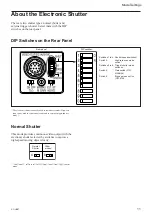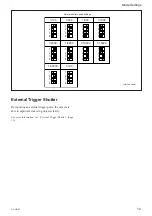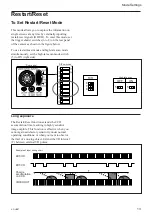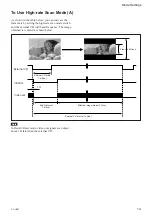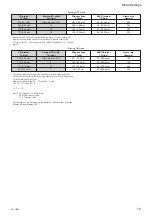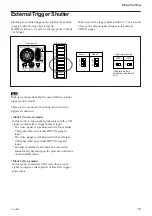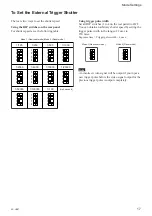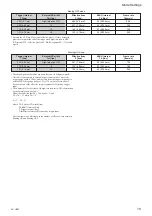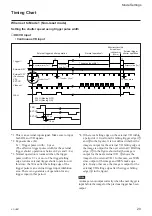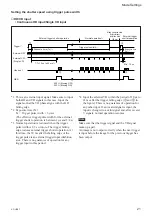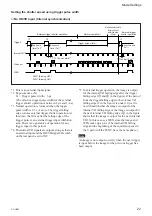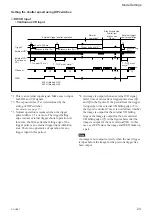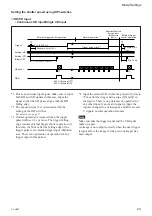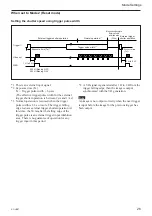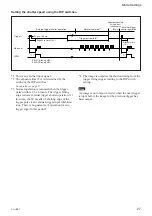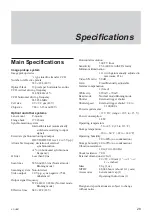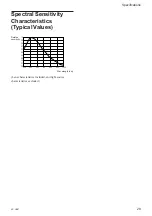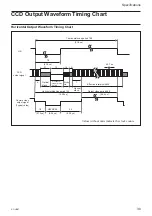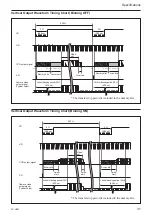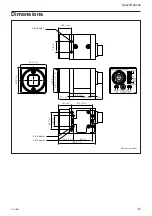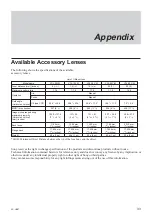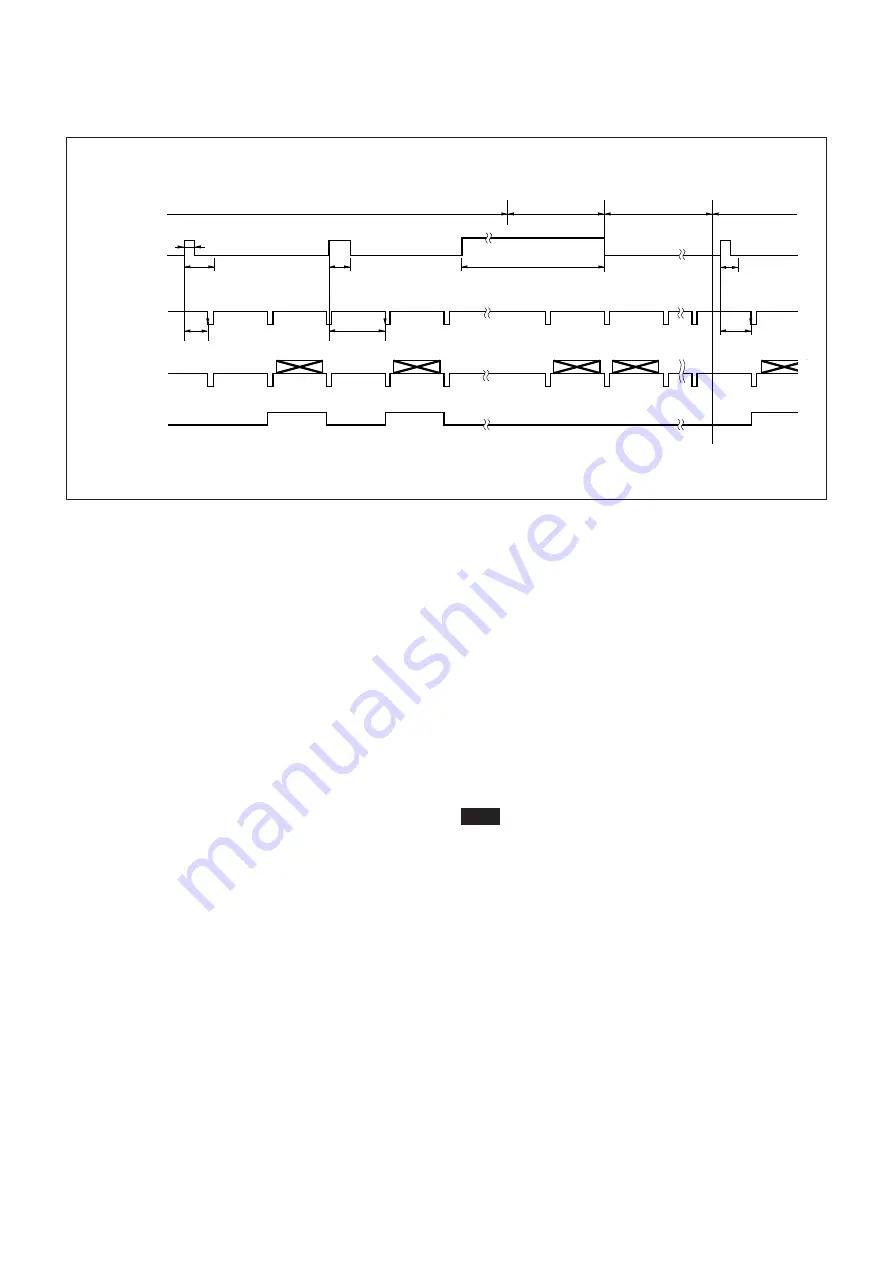
25
Mode Settings
XC-HR57
Setting the shutter speed using DIP switches
◆
No HD/VD input (Internal synchronization)
*1 This is an external input signal.
*2 The exposure time (Te) is determined by the
setting of the DIP switches.
For details, see page 17.
*3 Normal operation is resumed when the trigger
pulse width is 1/3 s or more. The trigger falling
edge restores external trigger shutter operation. At
this time, the 50 ms after the falling edge of the
trigger pulse is an external trigger input inhibition
area. There is no guarantee of operation for any
trigger input in this period.
*4 The internal VD signals are output as long as there
is no external input and the HD/VD signal
input/output switch on the rear panel is set to INT.
1
1
2
3
3
2
*5 An image is output when an internal VD signal
falls 10 ms or more after a trigger pulse rises (
2
and
3
in the figure). If the period from the
trigger rising edge to the internal VD falling edge
(T in the figure) is under 10 ms, it is not defined
whether the image is output for the internal VD
falling edge or the image is output for the next
internal VD falling edge. (
1
in the figure shows
that the image is output for the next internal VD).
In this case, see WEN since the image and WEN
make up a pair.
(The internal VD falling edge and the beginning
of the equivalent pause in the V period of the
SYNC have the same phase.)
Note
An image is not output correctly when the next
trigger is input before the image for the previous
trigger has been output.
External trigger shutter operation
Normal
operation
*
3
Mode transition state
External input
inhibition area
(50 ms)
External trigger
shutter operation
Exposure time (Te)
*
2
Exposure time
(Te)
*
2
Trigger pulse width
*
3
T: T=under 10 ms
*
5
525 H (Binning OFF)
263 H (Binning ON)
Trigger
*
1
Internal VD
*
4
Video out
WEN
T: T=10 ms or
more
*
5
2
µ
s to 250 ms
T: T=10 ms or more
*
5
Exposure time (Te)
*
2

